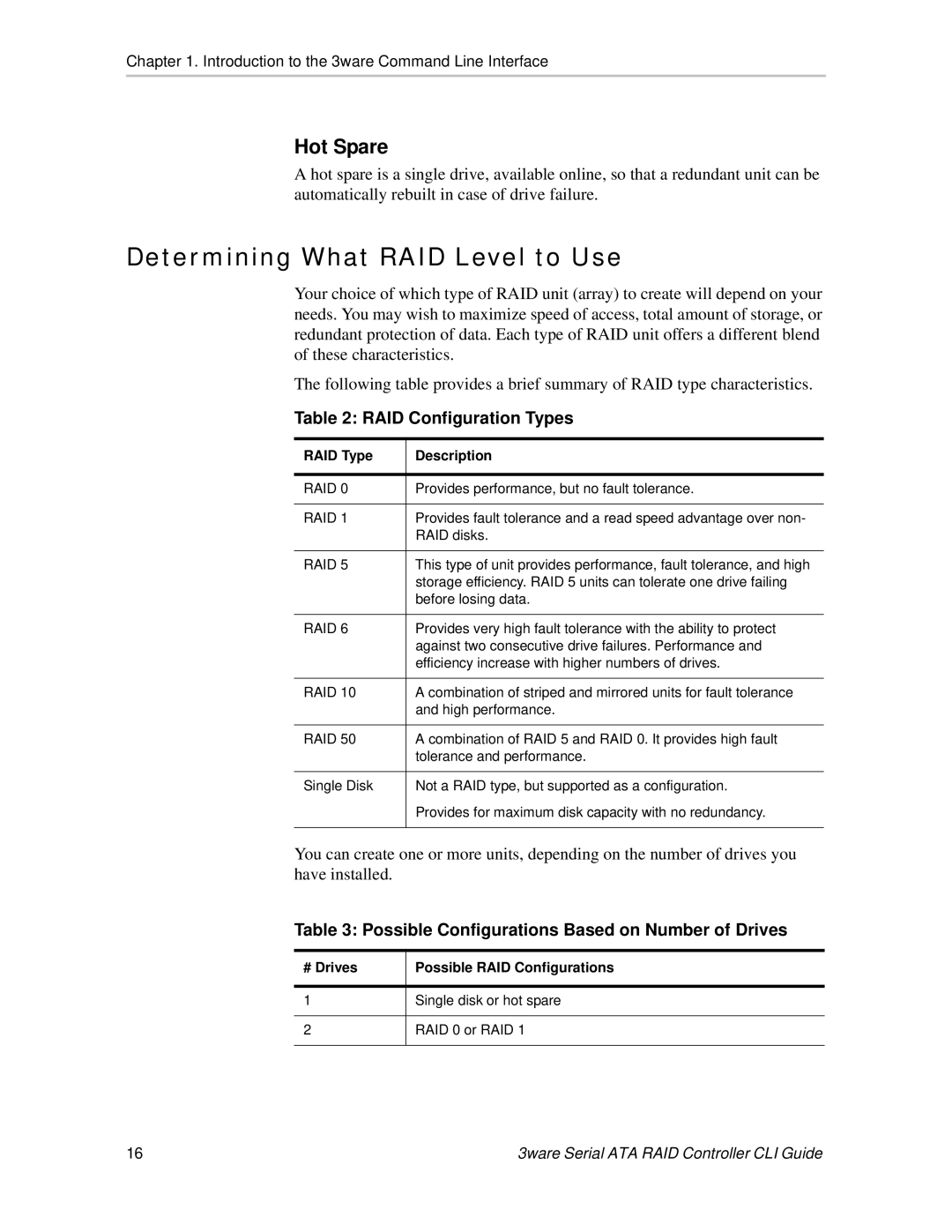Chapter 1. Introduction to the 3ware Command Line Interface
Hot Spare
A hot spare is a single drive, available online, so that a redundant unit can be automatically rebuilt in case of drive failure.
Determining What RAID Level to Use
Your choice of which type of RAID unit (array) to create will depend on your needs. You may wish to maximize speed of access, total amount of storage, or redundant protection of data. Each type of RAID unit offers a different blend of these characteristics.
The following table provides a brief summary of RAID type characteristics.
Table 2: RAID Configuration Types
RAID Type | Description |
|
|
RAID 0 | Provides performance, but no fault tolerance. |
|
|
RAID 1 | Provides fault tolerance and a read speed advantage over non- |
| RAID disks. |
|
|
RAID 5 | This type of unit provides performance, fault tolerance, and high |
| storage efficiency. RAID 5 units can tolerate one drive failing |
| before losing data. |
|
|
RAID 6 | Provides very high fault tolerance with the ability to protect |
| against two consecutive drive failures. Performance and |
| efficiency increase with higher numbers of drives. |
|
|
RAID 10 | A combination of striped and mirrored units for fault tolerance |
| and high performance. |
|
|
RAID 50 | A combination of RAID 5 and RAID 0. It provides high fault |
| tolerance and performance. |
|
|
Single Disk | Not a RAID type, but supported as a configuration. |
| Provides for maximum disk capacity with no redundancy. |
|
|
You can create one or more units, depending on the number of drives you have installed.
Table 3: Possible Configurations Based on Number of Drives
# Drives | Possible RAID Configurations |
|
|
1 | Single disk or hot spare |
|
|
2 | RAID 0 or RAID 1 |
|
|
16 | 3ware Serial ATA RAID Controller CLI Guide |
